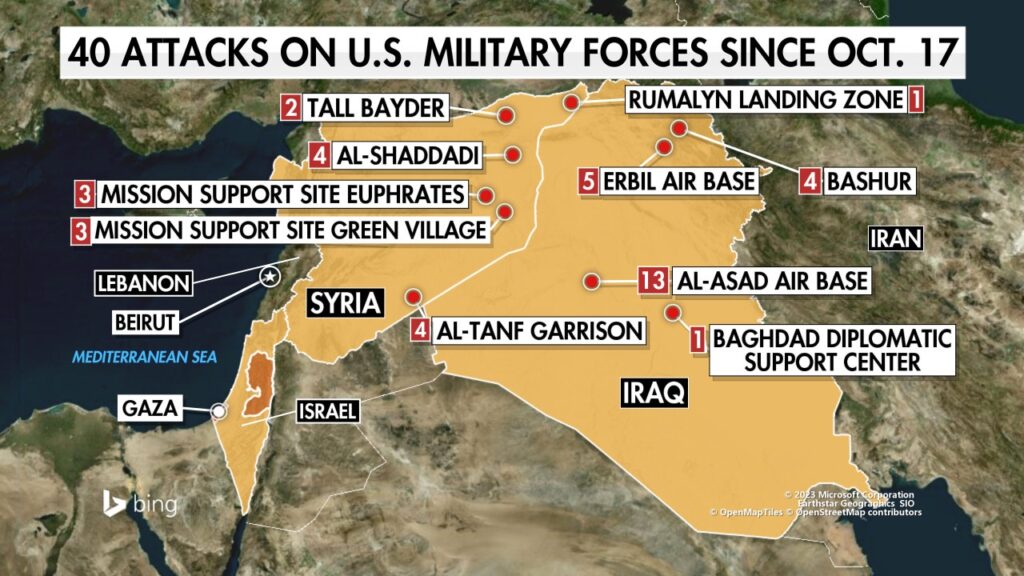
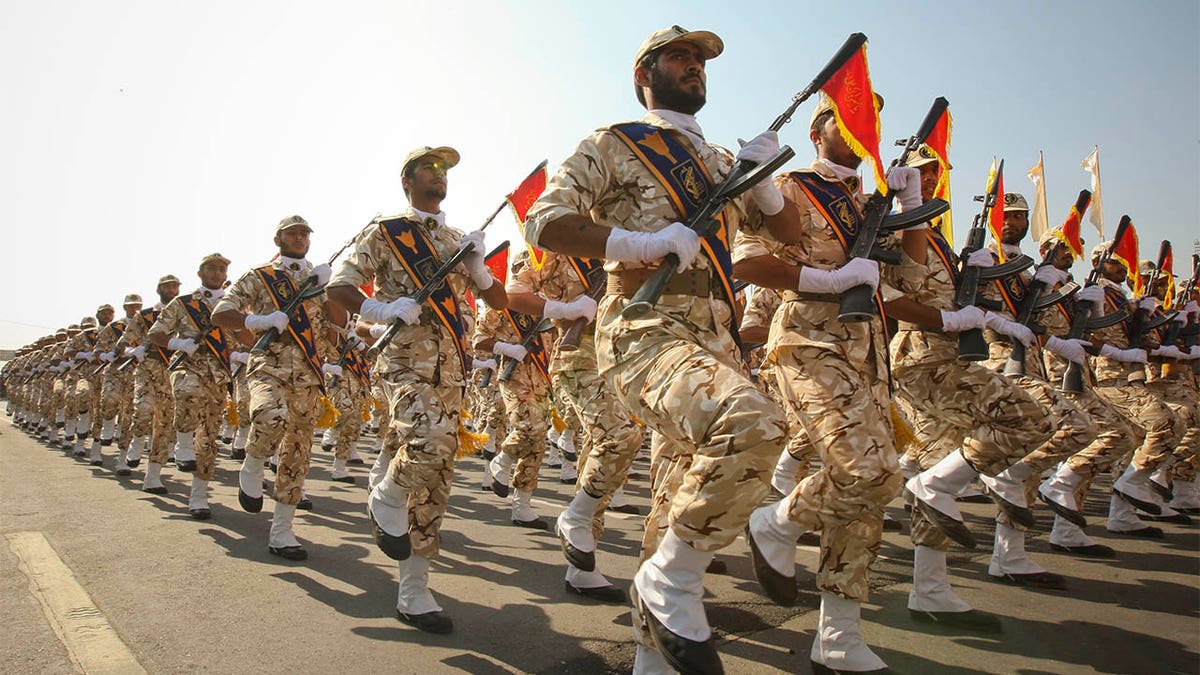
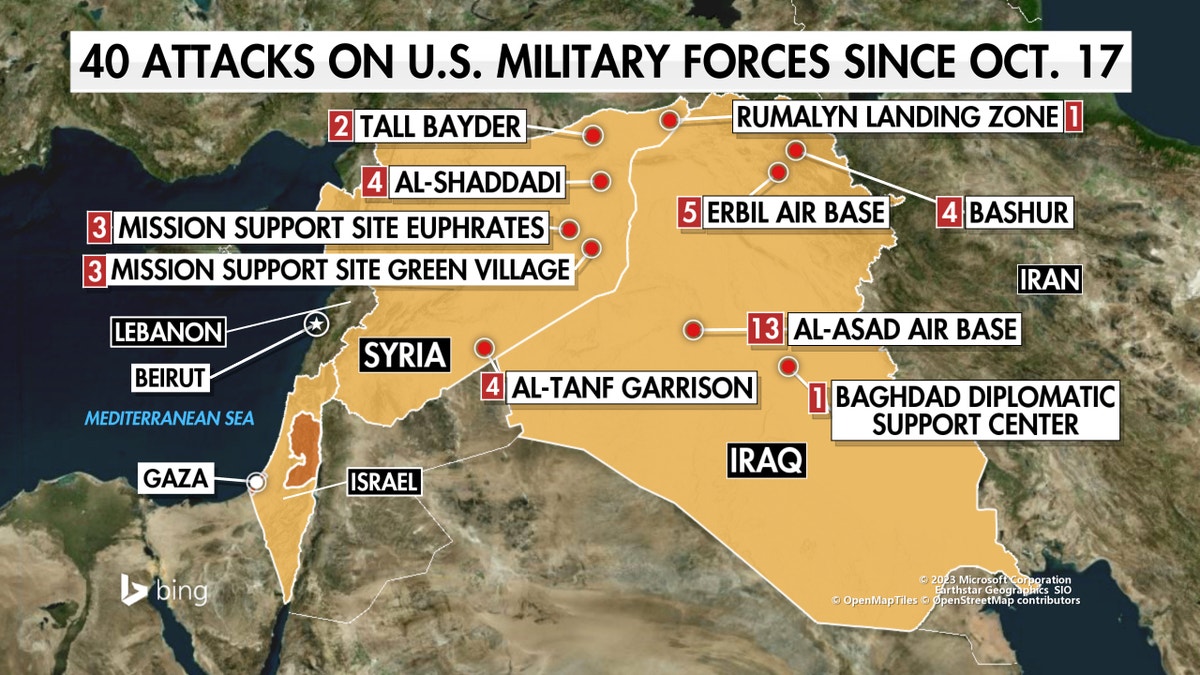
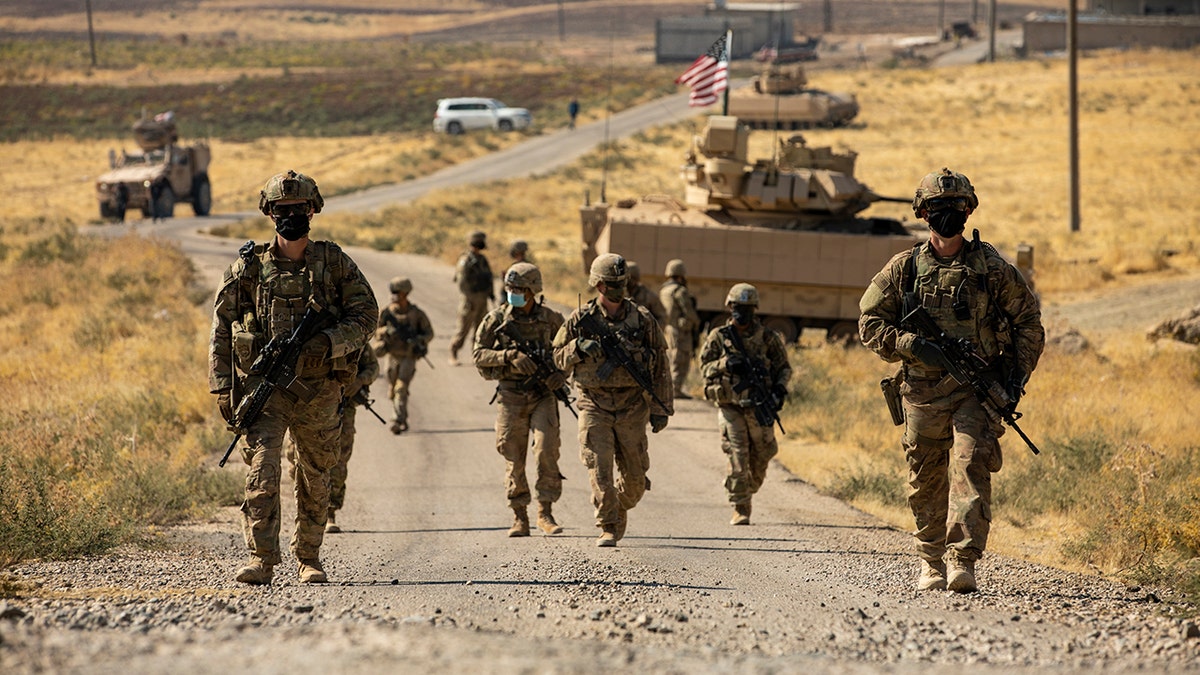
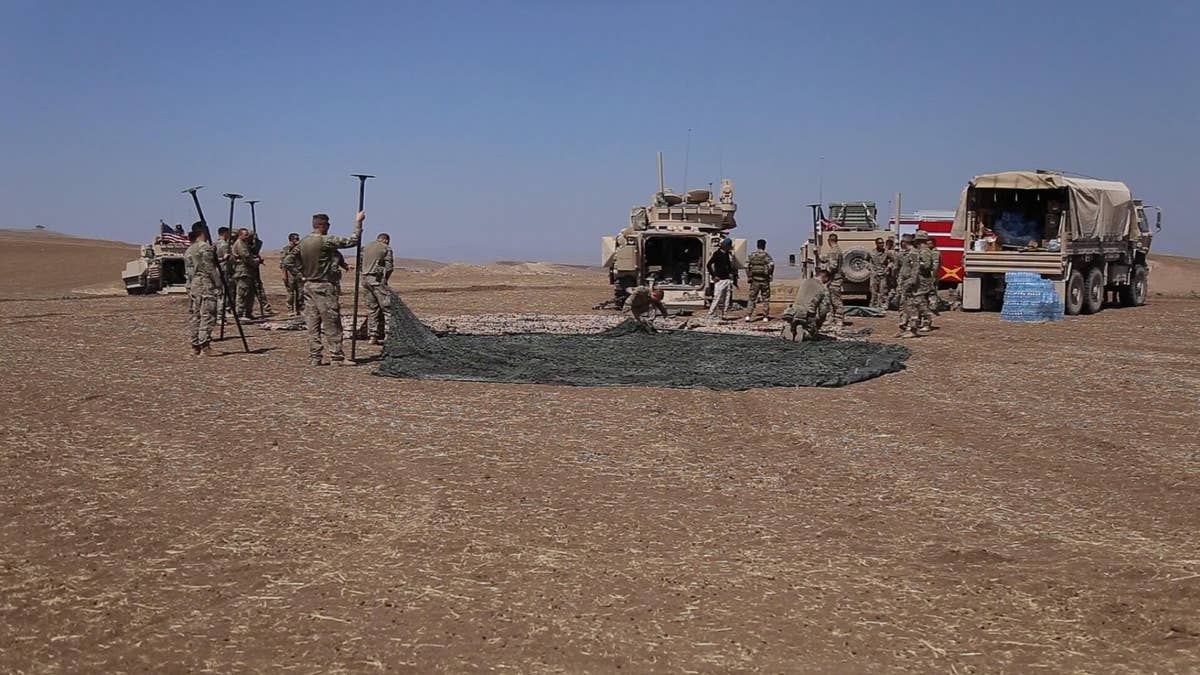
A new report by the Foundation for Defense of Democracies (FDD) reveals 15 Iran-backed militias across the Middle East that have “incestuous” ties to Tehran and are working as a “force multiplier” for the country to oppose Israel and the United States.
The report notes that while Iran’s support for Hezbollah, Hamas and Palestinian Islamic Jihad is well known, less known is Iran’s long-term project of building and co-opting 15 militias in Iraq, Syria, Yemen, Bahrain and Saudi Arabia.
Bill Roggio, senior fellow at FDD and co-author of the report, in an interview with Fox News Digital warned that Iran’s creation of these militias “creates a fog” and gives Iran “plausible deniability.”
However, Roggio says that “unfortunately, a lot of American politicians buy into that.”
MIDDLE EAST PAYING PRICE OF BIDEN WHITE HOUSE REMOVING HOUTHIS FROM TERRORIST LIST, EXPERTS SAY

Supreme Leader Ayatollah Ali Khamenei speaks during a meeting with nuclear scientists and personnel of the Atomic Energy Organization of Iran, in Tehran on June 11. (Office of the Iranian Supreme Leader/WANA/Reuters )
The report comes to light as the Biden administration has come under scrutiny for its deals with Iran, including a $6 billion prisoner exchange that was reportedly paused after Hamas terrorists attacked Israel on Oct. 7 and slaughtered over 1,400 Israelis.
The report says that groups like the Badr Organization have served as Iranian proxies since the Iran-Iraq war in the 1980s. After the U.S. invasion of Iraq in 2003, Iran’s Islamic Revolutionary Guard Corps – Quds Force (IRCG-QF) expanded its militia-building project when it co-opted the Mahdi Army, a Shia militia run by Muqtada al-Sadr, the son of an influential Shia cleric.
The IRGC, with the support of Hezbollah, established several new militias, such as Asa’ib Ahl al-Haq and Hezbollah Brigades, which were offshoots of the Mahdi Army and commanded by senior Mahdi Army commanders, the report notes.

Members of the Iranian Revolutionary Guard march during a parade to commemorate the anniversary of the Iran-Iraq war. (Reuters)
“The relationship between these militias and the IRGC is incestuous. The U.S. government described the commander of Hezbollah Brigades, Abu Mahdi al Muhandis, as a Quds Force officer,” the report says.
“Other militia commanders have sworn to unquestionably follow the orders of Iran’s Supreme Leader. The IRGC armed, trained, and funded these militias, as well as gave them safe haven on Iranian territory,” it continues.
“During the U.S. presence in Iraq, from 2003 to 2011, more than 600 American soldiers were killed by these Iran-backed militias in complex attacks, ambushes, and IED and EFP attacks,” it says.
The Asa’ib Ahl al-Haq militia are responsible for kidnapping and executing six U.S. soldiers during its 2006 assault on the Karbala Provincial Joint Communications.
HAMAS TERROR LEADERS HIDING ACROSS MIDDLE EAST AWAY FROM WAR IN GAZA

Map shows 40 attacks on U.S. military in the Middle East.
Also among the 15 “proxies” that Iran has co-opted or created in Yemen and Bahrain is Ansar Allah – more commonly known as the Houthis. The Houthis are a powerful militia in Yemen that controls much of the northern part of the country, including the capital of Sana’a.
The official motto of the Houthis is “God is great, death to the U.S., death to Israel, curse the Jews, and victory for Islam.”
According to the FDD report, the Houthis are the only Iran-backed militia with an arsenal of medium range cruise and ballistic missiles capable of targeting Israel. In mid-October 2023, the Houthis fired several missiles at Israel, forcing a U.S. destroyer to shoot them down.
“In 2014, as the Islamic State took control of large swathes of northern, central, and western Iraq, as well as Syria, Iran expanded its militia building project. Several new militias were founded, and some, such as Kata’ib Sayyid al-Shuhada, the Imam Ali Brigades, and Harakat Hezbollah al Nujaba, were offshoots of Asa’ib Ahl al-Haq and Hezbollah Brigades, and led by key commanders within the latter groups,” the report notes.
US MILITARY DEPLOYS NUCLEAR-POWERED SUBMARINE IN MIDDLE EAST

Soldiers with the U.S. 1st Armored Division make their way to an oil production facility in the Central Command (CENTCOM) area of responsibility in Syria on Oct. 27, 2020. (U.S. Army photo by Spc. Jensen Guillory)
“Sadr’s Mahdi Army morphed into the Promised Day Brigades and the Peace Brigades, while new groups such as Saraya al-Khorasani, was formed by an IRGC officer,” it says.
“Over the course of two decades, these militias have become experienced and battle hardened while fighting against the U.S. military, the former al-Qaeda in Iraq, the Islamic State, and Syrian rebel groups,” it continues.
Roggio says the “root” of the problem the United States faces in the Middle East is “an Iranian regime that has nothing but animosity towards the United States.”

U.S. forces provide military training in the Qamisli district in the Al-Hasakah province, Syria, on Aug. 18, 2023. (Hedil Amir/Anadolu Agency via Getty Images)
CLICK HERE TO GET THE FOX NEWS APP
“When we released funds to Iran, and then Iran turns around and directs militias to attack us, it creates a lot of confusion. It’s very difficult for the U.S. to fight these wars, because we’re not getting to the root of the problem. And the root of the problem is an Iranian regime that has nothing but animosity towards the United States, and until we start hearing that from the administration, there will continue to be confusion,” Roggio said.
“The American public doesn’t understand these types of wars because the American government is willing to do things like negotiate a nuclear deal with Iran to treat Iran like it is a responsible actor in the international community,” he said.
Brianna Herlihy is a politics writer for Fox News Digital.
[ad_2]
Source link

